Book:The Science of Discworld: Difference between revisions
m (1 revision: Book Namespace) |
(Added notes about the cover and changes to the revised 2002 edition) |
||
| (5 intermediate revisions by 2 users not shown) | |||
| Line 1: | Line 1: | ||
{{Book Data | |||
|title=The Science of Discworld | |||
|cover=[[File:SOD.jpg|240px|thumb|Cover by Paul Kidby]] | |||
|coauthors=[[Ian Stewart]], [[Jack Cohen]] | |||
|illustrator=[[Paul Kidby]] | |||
|publisher=Ebury Press | |||
|date=1999 | |||
|isbn=0091865158 | |||
|pages=434 | |||
|rrp=£16.99 | |||
|series=Science books | |||
|characters= | |||
|annotations= | |||
|notes= | |||
}} | |||
==Blurb== | ==Blurb== | ||
In the fantasy universe of the phenomenally best-selling Discworld series, everything runs on magic and common sense. The world is flat and [[million-to-one chance|million-to-one chances]] happen nine times out of ten. Our world seems different – it runs on rules, often rather strange ones. Science is our way of finding out what those rules are. The appeal of Discworld is that it mostly makes sense, in a way that particle physics doesn't. | In the fantasy universe of the phenomenally best-selling Discworld series, everything runs on magic and common sense. The world is flat and [[million-to-one chance|million-to-one chances]] happen nine times out of ten. Our world seems different – it runs on rules, often rather strange ones. Science is our way of finding out what those rules are. The appeal of Discworld is that it mostly makes sense, in a way that particle physics doesn't. | ||
| Line 5: | Line 20: | ||
Roundworld is, of course, our own universe. With us inside it (eventually). Guided (if that's the word) by the wizards, we follow the story from the primal singularity of the Big Bang to the Internet and beyond. We discover how puny and insignificant lives are against a cosmic backdrop of creation and disaster. Yet, paradoxically, we see how the richness of a universe based on rules has led to a complex world and at least one species that tried to get a grip on what was going on... | Roundworld is, of course, our own universe. With us inside it (eventually). Guided (if that's the word) by the wizards, we follow the story from the primal singularity of the Big Bang to the Internet and beyond. We discover how puny and insignificant lives are against a cosmic backdrop of creation and disaster. Yet, paradoxically, we see how the richness of a universe based on rules has led to a complex world and at least one species that tried to get a grip on what was going on... | ||
==Cover== | |||
Paul Kidby's cover illustration is based on the 1768 painting "[[wikipedia:An Experiment on a Bird in the Air Pump|An Experiment on a Bird in the Air Pump]]" by Joseph Wright, in which a natural philosopher uses a pump to remove air from a glass container containing a white cockatiel, with onlookers showing a variety of reactions. | |||
==Major Characters== | ==Major Characters== | ||
| Line 24: | Line 42: | ||
*[[Loko]] (Mentioned) | *[[Loko]] (Mentioned) | ||
==Notes== | |||
The 2002 and later editions include revisions to the science material to reflect "three years of scientific progress...forwards or backwards". In addition, two of the original fiction chapters (29 and 33) were split up to create space for two entirely new science chapters about cosmic disasters (chapter 32) and the life of dinosaurs (chapter 36). | |||
==Gallery== | |||
{| | |||
|- | |||
| valign="top" | [[File:SOD FE.jpg|thumb|120px|First Edition cover by [[Paul Kidby]]]] | |||
| valign="top" | [[File:SOD Proof.jpg|thumb|120px|Book Proof]] | |||
| valign="top" | [[File:SOD CD.jpg|thumb|150px|Audio CD]] | |||
| valign="top" | [[File:SOD update.jpg|thumb|120px|Updated Cover]] | |||
| valign="top" | [[File:SOD Kirby.jpg|thumb|120px|Cover by [[Josh Kirby]]]] | |||
| valign="top" | [[File:SOD US.jpg|thumb|120px|US Cover]] | |||
|} | |||
{{series|series=Rincewind|before=The Last Continent|after=The Last Hero}} | {{series|series=Rincewind|before=The Last Continent|after=The Last Hero}} | ||
{{ | {{series|series=Science|before=|after=The Science of Discworld II: the Globe}} | ||
[[Category:Rincewind Series|Science of Discworld I, The]] | [[Category:Rincewind Series|Science of Discworld I, The]] | ||
[[Category:Science | [[Category:Science Series|Science of Discworld I, The]] | ||
[[de:Buch:Die Gelehrten der Scheibenwelt]] | [[de:Buch:Die Gelehrten der Scheibenwelt]] | ||
Latest revision as of 02:54, 15 August 2020
| The Science of Discworld | |
 | |
| Co-author(s) | Ian Stewart, Jack Cohen |
| Illustrator(s) | Paul Kidby |
| Publisher | Ebury Press |
| Publication date | 1999 |
| ISBN | 0091865158 |
| Pages | 434 |
| RRP | £16.99 |
| Main characters | |
| Series | Science books |
| Annotations | View |
| Notes | |
| All data relates to the first UK edition. | |
Blurb
In the fantasy universe of the phenomenally best-selling Discworld series, everything runs on magic and common sense. The world is flat and million-to-one chances happen nine times out of ten. Our world seems different – it runs on rules, often rather strange ones. Science is our way of finding out what those rules are. The appeal of Discworld is that it mostly makes sense, in a way that particle physics doesn't.
The Science of Discworld uses the magic of Discworld to illuminate the scientific rules that govern our world. When a wizardly experiment goes adrift, the wizards of Unseen University find themselves with a pocket universe on their hands: Roundworld, where neither magic nor common sense seems to stand a chance against logic.
Roundworld is, of course, our own universe. With us inside it (eventually). Guided (if that's the word) by the wizards, we follow the story from the primal singularity of the Big Bang to the Internet and beyond. We discover how puny and insignificant lives are against a cosmic backdrop of creation and disaster. Yet, paradoxically, we see how the richness of a universe based on rules has led to a complex world and at least one species that tried to get a grip on what was going on...
Cover
Paul Kidby's cover illustration is based on the 1768 painting "An Experiment on a Bird in the Air Pump" by Joseph Wright, in which a natural philosopher uses a pump to remove air from a glass container containing a white cockatiel, with onlookers showing a variety of reactions.
Major Characters
Minor Characters
Locations
- Unseen University
- Roundworld
- Loko (Mentioned)
Notes
The 2002 and later editions include revisions to the science material to reflect "three years of scientific progress...forwards or backwards". In addition, two of the original fiction chapters (29 and 33) were split up to create space for two entirely new science chapters about cosmic disasters (chapter 32) and the life of dinosaurs (chapter 36).
Gallery
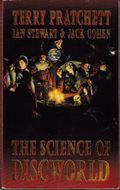 |
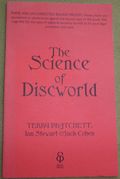 |
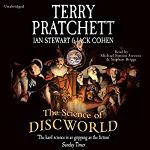 |
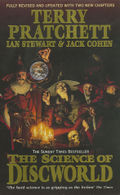 |
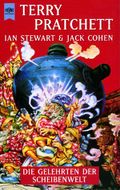 |
 |
| Previous book |
Rincewind Series | Next book |
|---|
| Previous book First book |
Science Series | Next book |
|---|